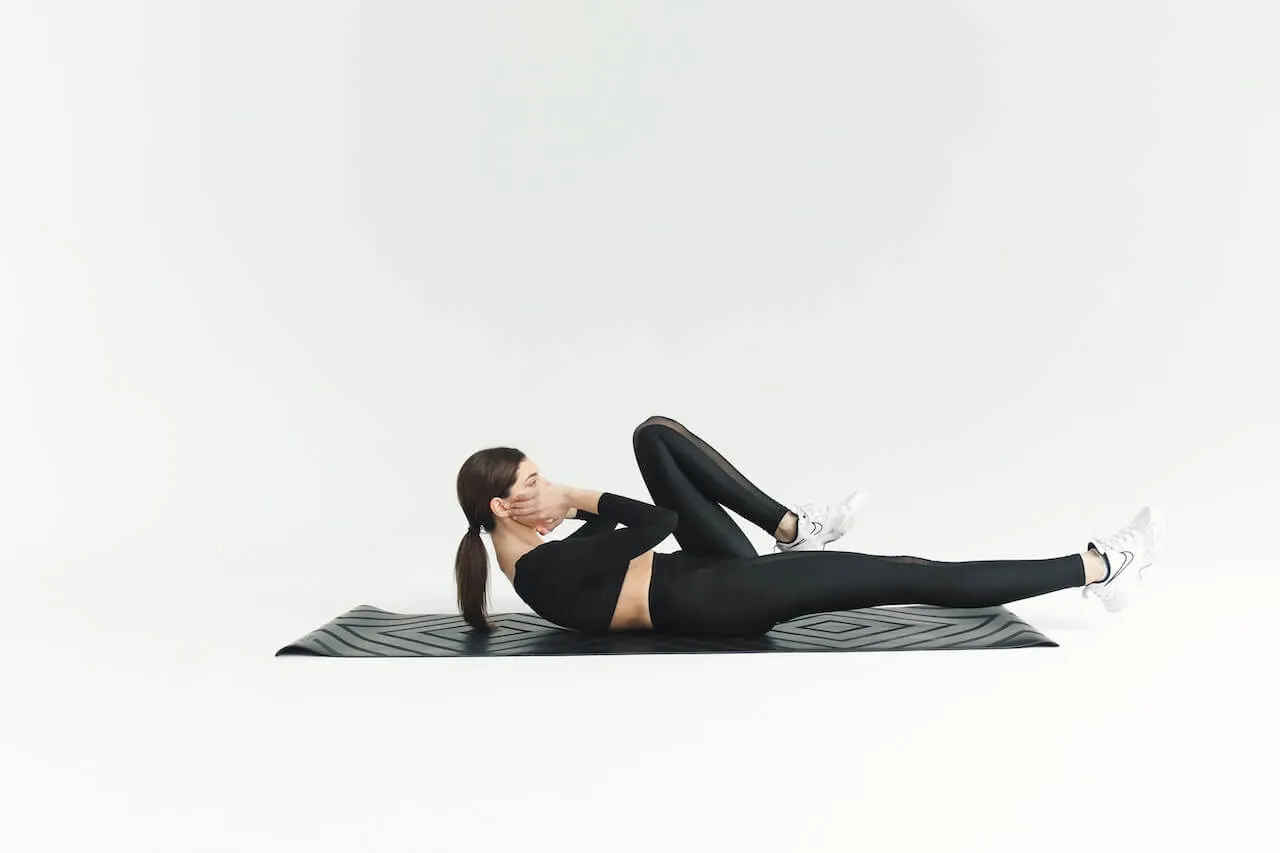The first step to starting an exercise routine is finding a sustainable program that works for you. It can take time to adjust to how your body feels, the muscle soreness, and just fitting the time into your busy schedule. Once you’ve got the exercise routine in place, it is time to talk about logistics. Specifically, are you exercising in the appropriate heart rate zones to accomplish your goals and reduce the risk of injury? Not reaching a heart rate that is high enough might mean plateauing in your progress. However, exercising at a heart rate that is too high could lead to adverse health reactions, injury, and overtraining. This article explains the different levels of heart rate zones and why you should pay attention to your heart rate while exercising.
{{mid-cta}}
What Are Exercise Heart Rate Zones?
Heart Rate Training zones are a percentage of your maximum heart rate and correspond to intensity, perceived effort, and the specific fuel source used to create energy during exercise (i.e., carbohydrates vs. fats).6 The first zone begins at 50 percent of your maximum heart rate, and the last (fifth) zone goes to 100 percent. Here is a heart rate zone chart explaining each zone below.

Zone 1
This is considered the “warm up” and “cool down” zone. It is meant to stay at a low intensity so your body increases blood flow and warmth without risking early fatigue. This could include brisk walking, gentle cycling, or low-impact exercises like yoga or pilates. The goal of Zone 1 training is to help with recovery.
Zone 2
This is the best zone of training for increasing an aerobic base and improving cardiovascular endurance. This is also the zone in which we tend to use the most fat as a source of energy, so it can be the best zone to train in for weight loss, improving blood sugar control, and body composition. Zone 2 training should make up about 80 percent of your weekly exercise.
Zone 3
This is where you build on your aerobic base and the capacity of your muscles to utilize oxygen efficiently. You are still in an aerobic state, so you are using mostly fats as your main energy source; however, the perceived effort feels “uncomfortably comfortable.” The goal of Zone 3 is to push yourself aerobically while reducing the amount of fatigue and lactate buildup in your muscle tissues, which improves your VO2 max and lactate threshold7.

Zone 4
This is where things start to feel difficult. Zone 4 training is for short, high-intensity intervals to improve muscle strength and power. You likely enter Zone 4 training during HIIT classes, sprinting, or weight lifting classes where you hit close to maximum weights. You will become anaerobic during this training zone, so you will use more carbohydrates for fuel instead of fats. There are also other benefits to anaerobic exercise other than athletic performance.
Zone 5
The final push. Zone 5 is your all-out effort working as hard as you can at 100 percent of your maximum heart rate. This training should be done infrequently, especially for new or untrained individuals or individuals with cardiovascular health concerns. If used correctly, training in Zone 5 helps improve the efficiency of fast-twitch muscle fibers for muscle power and sprinting - helping you feel stronger and faster.
How to Use Heart Rate Zones in a Training Plan
When we start to use exercise for training or working towards specific goals, it is important to utilize each training zone strategically to make the right physiological gains without injuries. For example, if you want to train for a 10K race, you would want to spend most of your days in Zone 2 training; a day in Zone 3 or 4, where you work on intensity and speed; and maybe a few short bursts of Zone 5 at the end of the workout to prime your nervous system for speed and power. Spending enough time in each heart rate zone improves your stamina, increases your muscular strength, and enhances your power output while reducing the chance of overtraining and adverse effects (i.e., injuries, heart problems, etc.). Here is a sample 8-week training plan for a 10K race that incorporates each training zone throughout the week within appropriate ratios: Zone 1 and 2 over 4 days a week, Zone 3 and 4 on 1-2 days a week, and Zone 5 for 25 percent of 1 day each week.
How to Calculate Your Maximum Heart Rate and Target Rate
It is important to calculate your maximum heart rate before starting an exercise program, especially if you are hoping to target specific heart rate zones in your training. You can calculate your maximum heart rate in a variety of ways, and then use the percentages listed in the table above to calculate target heart rate ranges for each zone. The easiest method to calculate your maximum heart rate is to subtract your age from 220. As you can see, this is not the most accurate calculation since it does not take into account your gender, fitness level, medications, or comorbidities; however, it at least gives you a base estimate. Other ways to calculate your maximum heart rate include:
- Age-based Formulas: more research has been done to find a more accurate equation for calculating maximum heart rate based on your age. Nes et al. found the equation 211 - 0.64x age was statistically accurate and was not affected by gender or BMI levels, while Heinzmann-Filho et al. found the equation 200 - 0.48 x age to be statistically accurate for obese adults.1, 2
- Getting a Stress Test: this typically occurs at your doctor’s office or in a lab if you are an athlete. Whether performed on a treadmill or a bike, the stress test will measure your blood pressure, heart rate, and the electrical responses in your heart (i.e. EKG).
- Doing a field HRmax Test: If your doctor allows, performing your own field test can be an easy way to calculate or maximum heart rate during exercise. One of the simplest ways is by running around a track using the following protocol and a heart rate monitor (i.e., watch or chest strap):
- Warm up for 10-15 minutes (or 1-2 miles)
- Run comfortably hard for 400 meters (1 lap)
- Run another 400 meters while getting progressively faster every 100 meters. The goal is to be running as fast as you can for the last 100 meters.
- Cool down 10-15 minutes
- Check your heart rate data for the final 400 meters and find the maximum heart rate you reached. This is likely your personal HR max and can be used to calculate your target heart rate zones.
Here is a table with the average maximum and target heart rates by age (using the formula from Nes et al., 2013):

If you are wanting to find your target heart rates for a particular zone, then it is important to know the range of percentages for each zone to calculate your targets. For example, if you are 35 years old, then your heart rate maximum would be about 189. So, using the following ranges, your target heart rates per zone would be:

Again, you can use any method you want to calculate your maximum heart rate. Once you find this number, you simply multiply it by the percentage ranges listed above to help you calculate your target heart rates for each zone of training.
<div class="pro-tip"><strong>Also Read: </strong><a href=fat-burning-heart-rate-zone>Fat-Burning Heart Rate: What Is It, How to Calculate and Zones</a></a>.</div>
What Zone Should You Train In?
The heart rate zone you train in truly depends on your personal goals as well as your current experience or fitness level with exercise. For example, training in Zone 5 is entirely anaerobic and high-intensity. Training in this zone is meant to improve athletic performance, speed, and power for those who already have a solid base of fitness and strength. However, if your goal is weight loss and improving your blood sugar levels, then training in Zone 2 will help you burn more fat as well as increase the density and flexibility of the mitochondria in your cells.
What Heart Rate is Too High?
Although it is shown that high-intensity training is good for cardiovascular health and reducing metabolic disease, caution should be taken when exercising at certain heart rates for an extended period of time.3 A study performed in 2002 on hockey players who exercised above their maximum heart rate even for just 30 minutes saw negative effects on their heart rate recovery and even patterns of arrhythmias.4 With any sort of power-generating piece of equipment (i.e. car engine, phone battery, etc.), there is a level where asking it to “work harder for longer” is detrimental to its efficiency and shelf life. The same is true for your heart. Sometimes we need it to operate at high speeds, but not for very long, or it will burn out quickly. Staying within the heart rate zones mentioned in this article is the best way to make sure you are staying in a range that targets your goals without causing harm or injury.
Should You Check Your Heart Rate Always?
When you are starting to learn heart rate zones and how to use them while training, it is important to monitor your heart rate via a watch, chest strap, etc. It will be difficult to measure intensity based on “feel” or effort at first; however, over time, you will understand your body more and not have to check your heart rate constantly. That said, if you struggle with heart-related diseases or any other medical condition, then it is best to check your heart rate consistently and frequently while you exercise to keep yourself safe. This includes those who take certain medications (i.e., beta blockers) which can alter your maximum heart rate. Talk with your doctor before starting any exercise program if you are someone who deals with a medical condition or takes medications that could affect your heart rate.

Using a CGM with Signos: Real-Time Data, Backed by AI
Signos pairs a round-the-clock glucose biosensor with AI trained on tens of millions of data points to deliver personalized, science-backed guidance for weight management and health. See exactly how your body responds, and take action.
Learn how it works. Ready to get started? Join now.
<div class="pro-tip"><strong>Learn More: </strong><a href=heart-rate-monitors>A Guide for Heart Rate Monitors: Boost Your Fitness</a>.</div>
Topics discussed in this article:
References
- Nes, B. M., Janszky, I., Wisløff, U., Støylen, A., & Karlsen, T. (2013). Age-predicted maximal heart rate in healthy subjects: The HUNT fitness study. Scandinavian journal of medicine & science in sports, 23(6), 697–704. https://doi.org/10.1111/j.1600-0838.2012.01445.x
- Heinzmann-Filho, J. P., Zanatta, L. B., Vendrusculo, F. M., Silva, J. S. D., Gheller, M. F., Campos, N. E., Oliveira, M. D. S., Feoli, A. M. P., Gustavo, A. D. S., & Donadio, M. V. F. (2018). MAXIMUM HEART RATE MEASURED VERSUS ESTIMATED BY DIFFERENT EQUATIONS DURING THE CARDIOPULMONARY EXERCISE TEST IN OBESE ADOLESCENTS. Revista paulista de pediatria : orgao oficial da Sociedade de Pediatria de Sao Paulo, 36(3), 309–314. https://doi.org/10.1590/1984-0462/;2018;36;3;00015
- Francois, M. E., & Little, J. P. (2015). Effectiveness and safety of high-intensity interval training in patients with type 2 diabetes. Diabetes spectrum : a publication of the American Diabetes Association, 28(1), 39–44. https://doi.org/10.2337/diaspect.28.1.39
- Atwal, S., Porter, J., & MacDonald, P. (2002). Cardiovascular effects of strenuous exercise in adult recreational hockey: the Hockey Heart Study. CMAJ : Canadian Medical Association journal = journal de l'Association medicale canadienne, 166(3), 303–307.
- Meserve, Casey. What is the Aerobic Heart Rate Zone and How Do You Target It? (2021, May 27th). Retrieved from: https://www.whoop.com/thelocker/aerobic-heart-rate-zone/#:~:text=The%20aerobic%20heart%20rate%20zone%20is%20a%20heart%20rate%20between,person%20running%20next%20to%20you.
- Exercise Heart Rate Zones Explained. (2021, May 12). Retrieved from: https://health.clevelandclinic.org/exercise-heart-rate-zones-explained/
- Sayer, Amber. Zone 3 Training + Avoiding the Grey Zone of Junk Miles. (2022, November 17). Retrieved from: https://marathonhandbook.com/zone-3-training/




.svg)










.svg)
.svg)
.svg)
.svg)
.svg)
.svg)
.svg)
